Wheel Size: 29’’ (Size Small 29’’ front / 27.5’’ rear; full 29’’ compatible)
Travel:
- Frame: 145 mm
- Fork: 150 mm
Geometry Highlights:
- Sizes Offered: Small, Medium, Large, XL, XXL
- Headtube Angle: 64.5°
- Seat Tube Angle: 77.4° (effective, size Large)
- Reach: 485 mm (size Large)
- Bottom Bracket Drop: 35 mm
- Chainstay Length: 442 mm (size Large)
Frame Material: Aluminum & carbon fiber versions available
Price: Complete Bikes $2,900 to $8,500 USD
Wheel Size: 29’’ front / 27.5’’ rear
Travel:
- Frame: 150 mm
- Fork: 160 mm
Geometry Highlights:
- Sizes Offered: Small, Medium, Large, XL, XXL
- Headtube Angle: 64.2°
- Seat Tube Angle: 77.0° (effective, size Large)
- Reach: 481.5 mm (size Large)
- Bottom Bracket Drop: 30.5 mm (front) / 13 mm (rear)
- Chainstay Length: 438.9 mm (size Large)
Frame Material: Aluminum & carbon fiber versions available
Price: Complete Bikes $5,000 to $8,500 USD
Wheel Size: 29’’
Travel:
- Frame: 160 mm
- Fork: 170 mm
Geometry Highlights:
- Sizes Offered: Small, Medium, Large, XL, XXL
- Headtube Angle: 63.4°
- Seat Tube Angle: 76.4° (effective, size Large)
- Reach: 473.2 mm (size Large)
- Bottom Bracket Drop: 27 mm
- Chainstay Length: 442 mm (size Large)
Frame Material: Aluminum & carbon fiber versions available
Price: Complete Bikes $5,200 to $8,700 USD
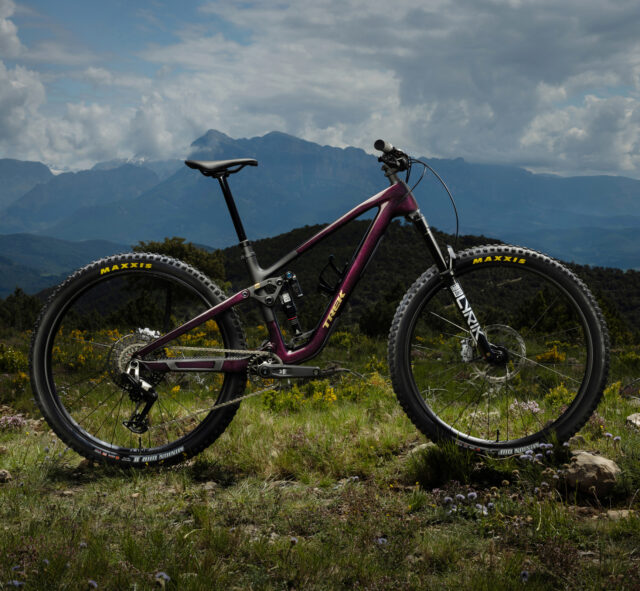
Intro
I’d bet pretty good money that the Trek Fuel EX Gen 6 is the bike that I’ve recommended to the most BLISTER+ Members over the last few years. It’s an exceptionally versatile and highly adaptable bike, the sort of thing that’s hard to make feel truly out of place across a huge range of trail types, and that a huge swath of riders from beginners to experts could get along with.
But now there’s a new Fuel EX, so how much has Trek messed with a good thing — for better or worse? And to build on the adaptability of the outgoing Fuel EX, Trek has made the Fuel platform modular, with new Fuel MX and Fuel LX models joining the lineup — and a truly bonkers secret menu of mix-and-match configurations to wade through from there. And that’s before we even get to the motorized half of the Fuel family, the Fuel+ trio.
Buckle up, this is a big one.
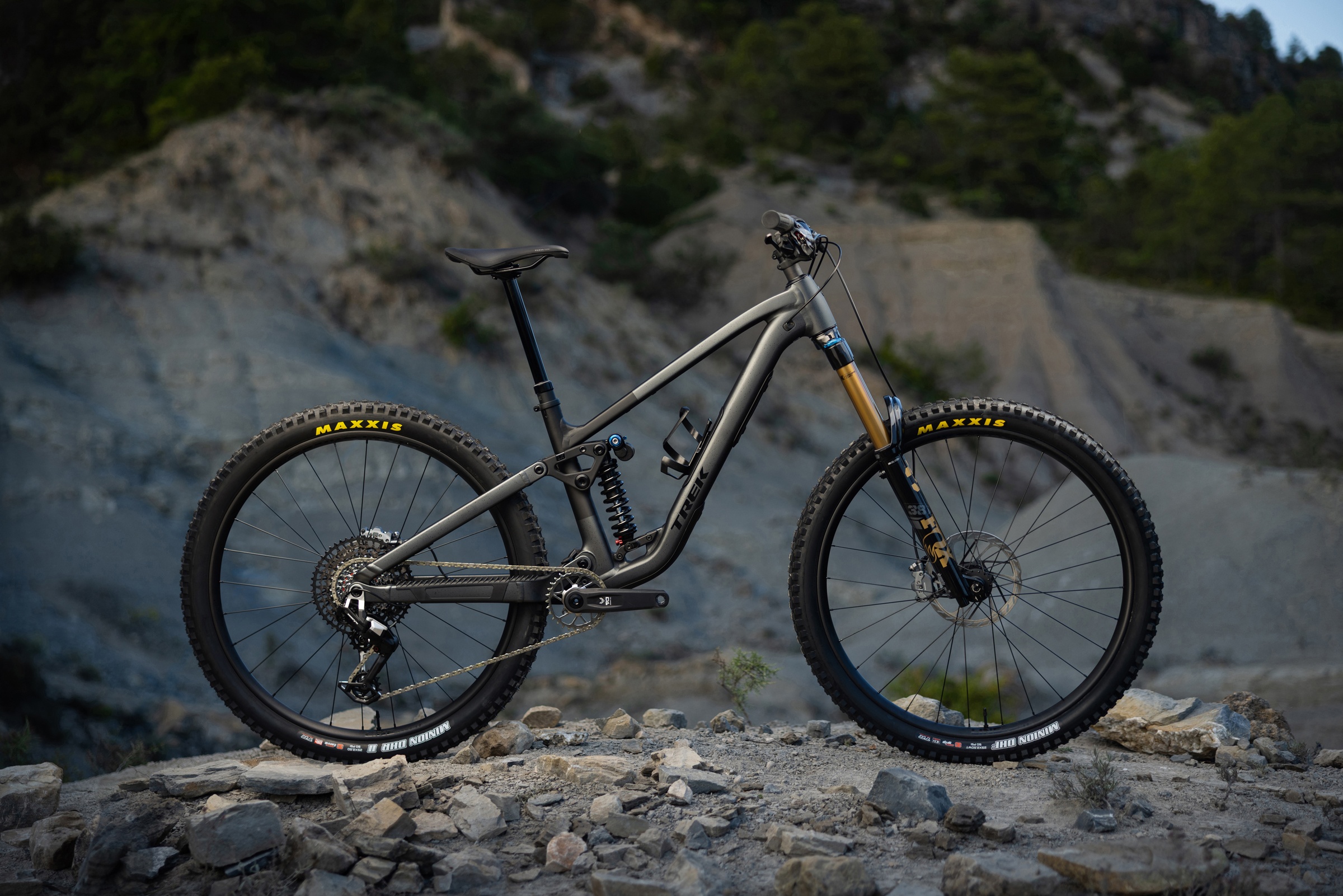
The Frame
The new Fuel uses one main frame for all three models, with three different rocker links and two different lower shock mounts (plus changes in build spec) used to configure the Fuel as an EX (145mm-travel 29er), MX (150mm-travel MX), or LX (160mm-travel 29er). That frame is offered in aluminum and carbon fiber versions, and uses Trek’s standard ABP suspension layout — a linkage-driven single-pivot with a pivot concentric to the rear dropout to give Trek some additional control over the anti-rise behavior (i.e., how the rear suspension responds to braking) and a vertically-oriented shock.
Compared to the outgoing Fuel EX, Trek has simplified the design language on the new Fuel, with straighter lines and fewer funky angles. The seat tube is straight to allow for better seatpost insertion, and the shock and rocker link have been moved back to open up space in the front triangle to open up space in the front triangle for bigger water bottles. On the storage front, Trek has also revised their downtube storage design, with a new latch, allegedly better sealing, and a wider opening with the door removed. The underside of the top tube features accessory mounts as well.
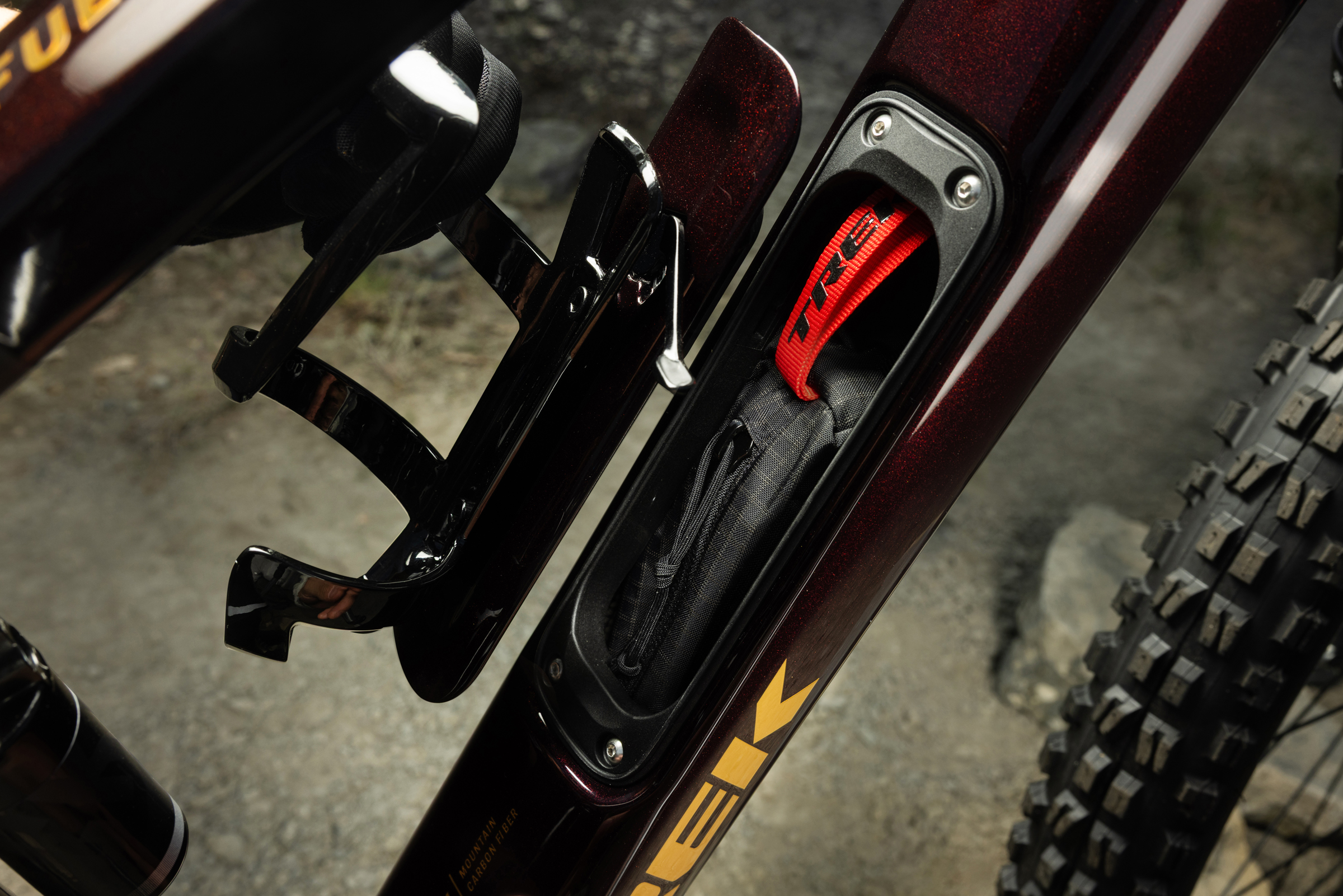
The prior-generation Fuel EX featured two flip chips (Mino Links in Trek parlance), one of which toggled between two suspension progression settings, while the other offered two geometry settings. The progression flip chip at the lower shock mount sticks around, while a new bolt-on shock mount (offered in two different versions) takes the place of the geometry-adjusting chip that was formerly located at the seatstay / rocker link pivot.
The swappable lower shock mount is primarily meant to toggle between rear wheel sizes, though it can be used for some off-menu geometry combinations as well. The Fuel EX and Fuel LX both come with the low / 29er shock mount (apart from the size Small Fuel EX, which gets mixed wheels and the high / MX shock mount), while the Fuel MX gets, well, the MX one. Each of the three versions uses its own rocker link to tailor the geometry and suspension kinematics (mostly the leverage curve) to their respective use cases; the Fuel LX also bumps up to a 205 x 65 mm stroke shock from the 205 x 60 mm one used on the Fuel EX and MX.
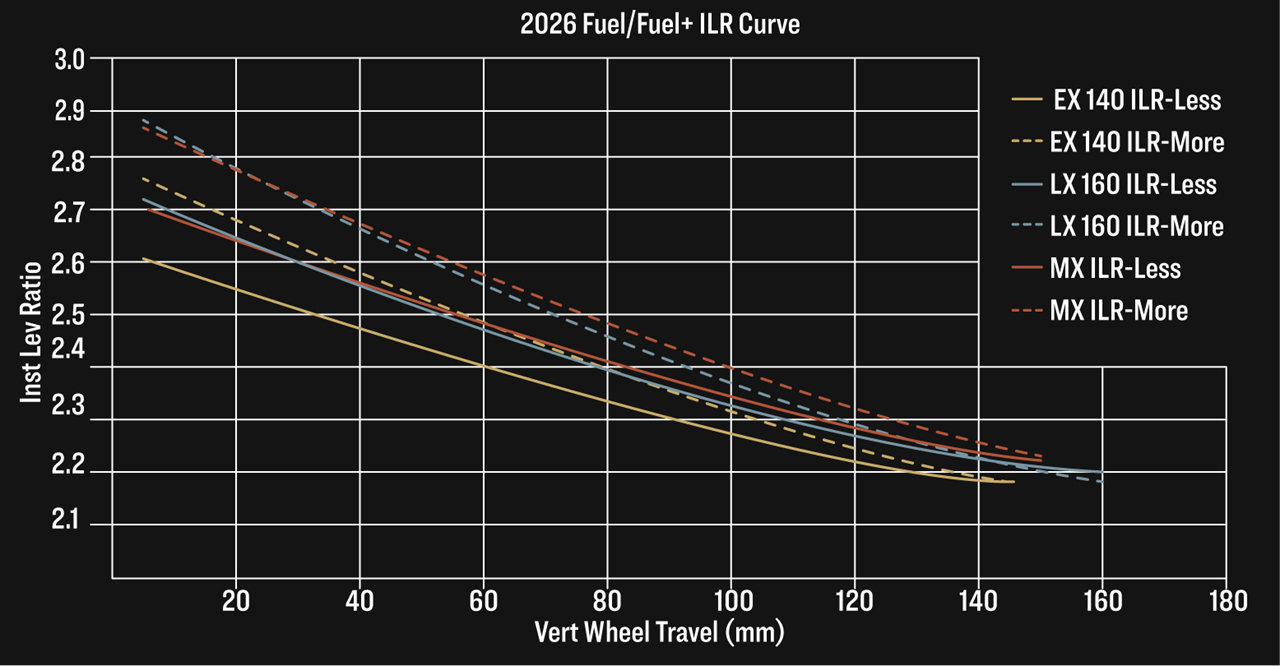
Fit & Geometry
Trek has pared down the size offerings on the new Fuel as compared to the outgoing Fuel EX. The latter was offered in seven sizes (XS, S, M, M/L, L, XL, and XXL), with separate 27.5’’ and 29’’-wheeled versions of the Small frame; the new Fuel family is offered in just five (S, M, L, XL, and XXL).
In doing so, they’ve tightened the sizing breaks up a touch. The loss of the XS frame is unfortunate, and while there’s still an XXL on the menu, it looks to fit a little smaller than the XXL version of the Gen 6 bike. The exact geometry details vary a bit based on which version of the Fuel you’re looking at, but Trek hasn’t tried to make the range of use cases / geometry settings so wide as to introduce what look like any big compromises there.
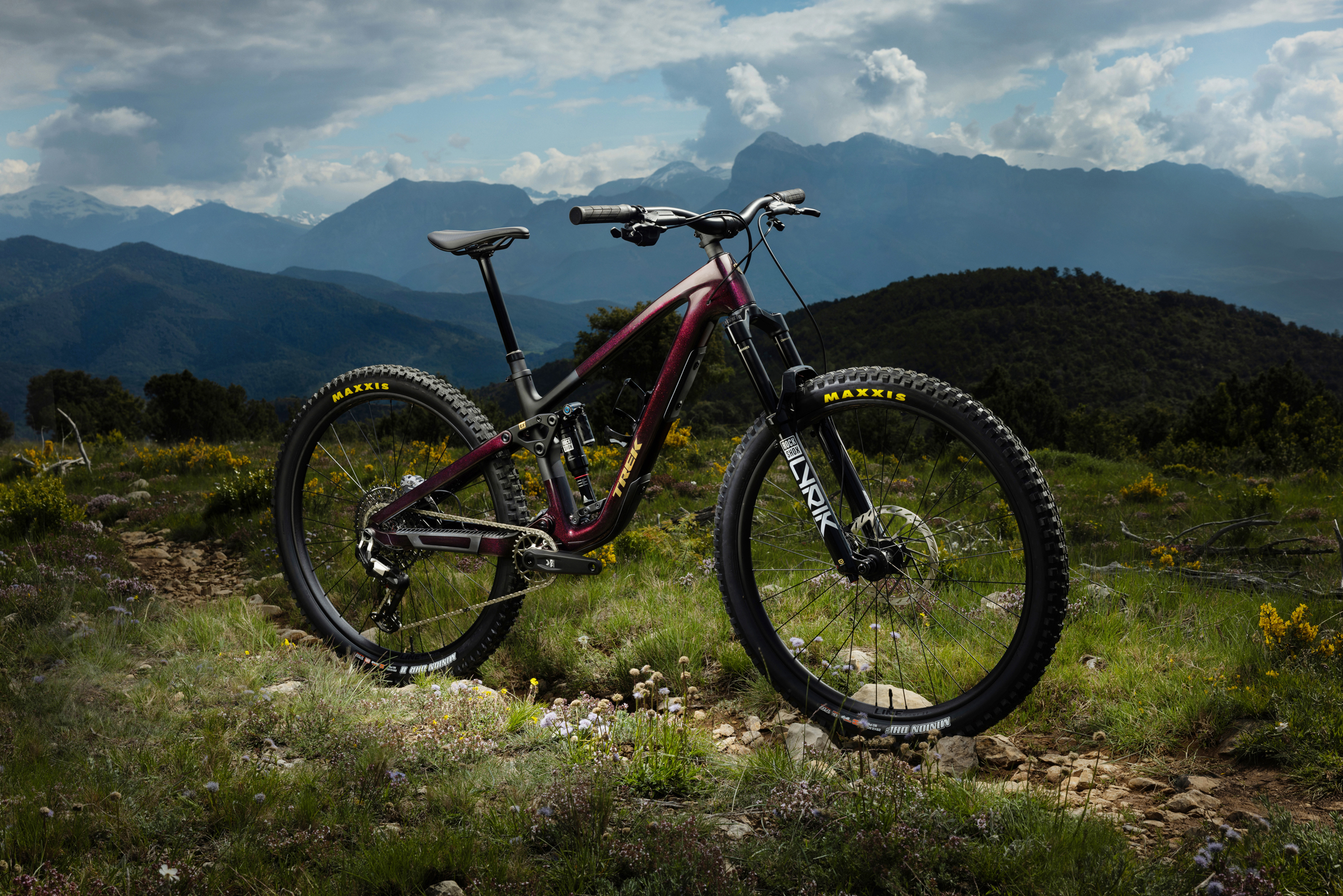
Geometry: Fuel EX
The updates to the geometry of the Fuel EX are mostly pretty modest, and also in keeping with modern trends in bike geometry. The headtube angle holds steady at 64.5°, and reach figures haven’t changed a ton either (give or take a little due to the pared-down size range). The Small frame gets a 430 mm reach and the XXL tops out at 530 mm, with stops at 460, 485, and 510 mm in between.
The new bike gets slightly longer chainstays (437 mm on the Small and Medium frames, with each successive size growing by 5 mm), and the seat tube angles are a touch steeper (78.6° effective on the size Small, and slackening to 76.4° by the XXL).
The biggest change is probably to stack heights, which start in the same ballpark on the smaller sizes but have grown dramatically on the larger ones (from 621 to 638 mm on the Large frame, for example). The effective seat tube angles have been steepened slightly, but they get there with a substantially steeper actual seat tube angle, which should make the seat tube feel steeper in real terms, especially for taller folks who need to run their seat higher.

The size Small Fuel EX comes stock as a mixed-wheel bike but can be converted to a full 29er by swapping the rear wheel and lower shock mount.
Geometry: Fuel MX
The geometry changes to the Fuel MX compared to the Fuel EX are in line with what you’d expect given its longer fork and mixed wheel setup on the same main frame. The headtube angle is a touch slacker at 64.2°, and the seat tube gets a little slacker as well. Those changes lop a few millimeters off the reach and raise the bottom bracket by about 4.5 mm as well. The mixed wheel setup also shortens the chainstays by about 3 mm in a given size.

Geometry: Fuel LX
No points for guessing that the Fuel LX is another small step slacker than the Fuel MX. Its headtube angle sits at 63.4°, its effective seat tube angle is around 76.5° (slightly steeper in the smaller sizes and slacker in the larger ones), and the bottom bracket drop is now ~27 mm. The reach for the Fuel LX is about 12 mm shorter than the Fuel EX in a given size, the stack ~8 mm higher, and, due to swapping back to a 29’’ rear wheel, the chainstay lengths match those of the Fuel EX.

The Builds
Between the three different versions of the Fuel, there are a lot of builds on offer. Trek has also expanded its Project One customization program for the Fuel, letting you pick custom paint and a degree of build customization (e.g., swapping coil spring rates, different length dropper posts, etc.
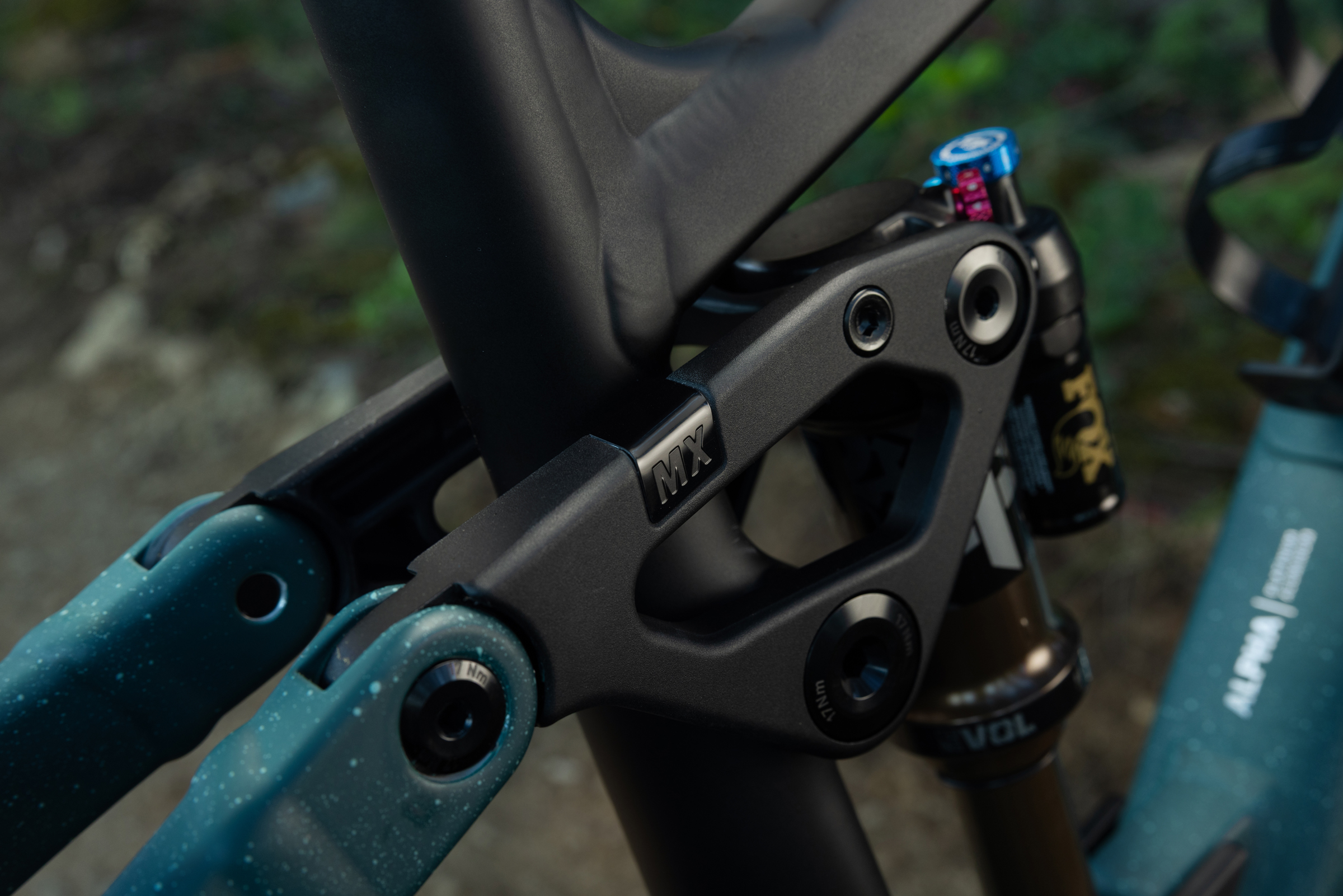
Builds: Fuel EX
- Drivetrain: Shimano Deore M6100 12-speed (mechanical)
- Brakes: Shimano MT201
- Fork: RockShox Recon Silver
- Shock: X-Fusion Pro 2
- Wheels: n/a
- Dropper Post: TransX
- Drivetrain: SRAM Eagle 70 Transmission
- Brakes: SRAM DB8
- Fork: Fox 36 Rhythm
- Shock: Fox Float X Performance
- Wheels: n/a
- Dropper Post: Bontrager Line
- Drivetrain: SRAM Eagle 90 Transmission
- Brakes: SRAM Maven Bronze
- Fork: RockShox Lyrik Ultimate
- Shock: RockShox Super Deluxe Ultimate
- Wheels: Bontrager Line Comp
- Dropper Post: Bontrager Line
- Drivetrain: Shimano XT M8100 (mechanical)
- Brakes: Shimano XT M8220
- Fork: Fox 36 Factory Grip X2
- Shock: Fox Float X Factory
- Wheels: Bontrager Line Comp
- Dropper Post: Bontrager Line
- Drivetrain: Shimano XT M8200 (wireless)
- Brakes: Shimano XT M8220
- Fork: Fox 36 Factory Grip X2
- Shock: Fox Float X Factory
- Wheels: Bontrager Line Comp
- Dropper Post: Bontrager Line
- Drivetrain: SRAM Eagle X0 AXS Transmission
- Brakes: SRAM Maven Silver
- Fork: RockShox Lyrik Ultimate
- Shock: RockShox Super Deluxe Ultimate
- Wheels: Bontrager Line Comp
- Dropper Post: Bontrager Line
- Drivetrain: SRAM Eagle 90 Transmission
- Brakes: SRAM Maven Bronze
- Fork: RockShox Lyrik Ultimate
- Shock: RockShox Super Deluxe Ultimate
- Wheels: Bontrager Line Comp
- Dropper Post: Bontrager Line
- Drivetrain: Shimano XT M8100 (mechanical)
- Brakes: Shimano XT M8220
- Fork: Fox 36 Factory Grip X2
- Shock: Fox Float X Factory
- Wheels: Bontrager Line Comp
- Dropper Post: Bontrager Line
- Drivetrain: Shimano XT M8200 (wireless)
- Brakes: Shimano XT M8220
- Fork: Fox 36 Factory Grip X2
- Shock: Fox Float X Factory
- Wheels: Bontrager Line Comp
- Dropper Post: Bontrager Line
- Drivetrain: SRAM Eagle X0 AXS Transmission
- Brakes: SRAM Maven Silver
- Fork: RockShox Lyrik Ultimate
- Shock: RockShox Super Deluxe Ultimate
- Wheels: Bontrager Line Pro Carbon
- Dropper Post: RockShox Reverb AXS
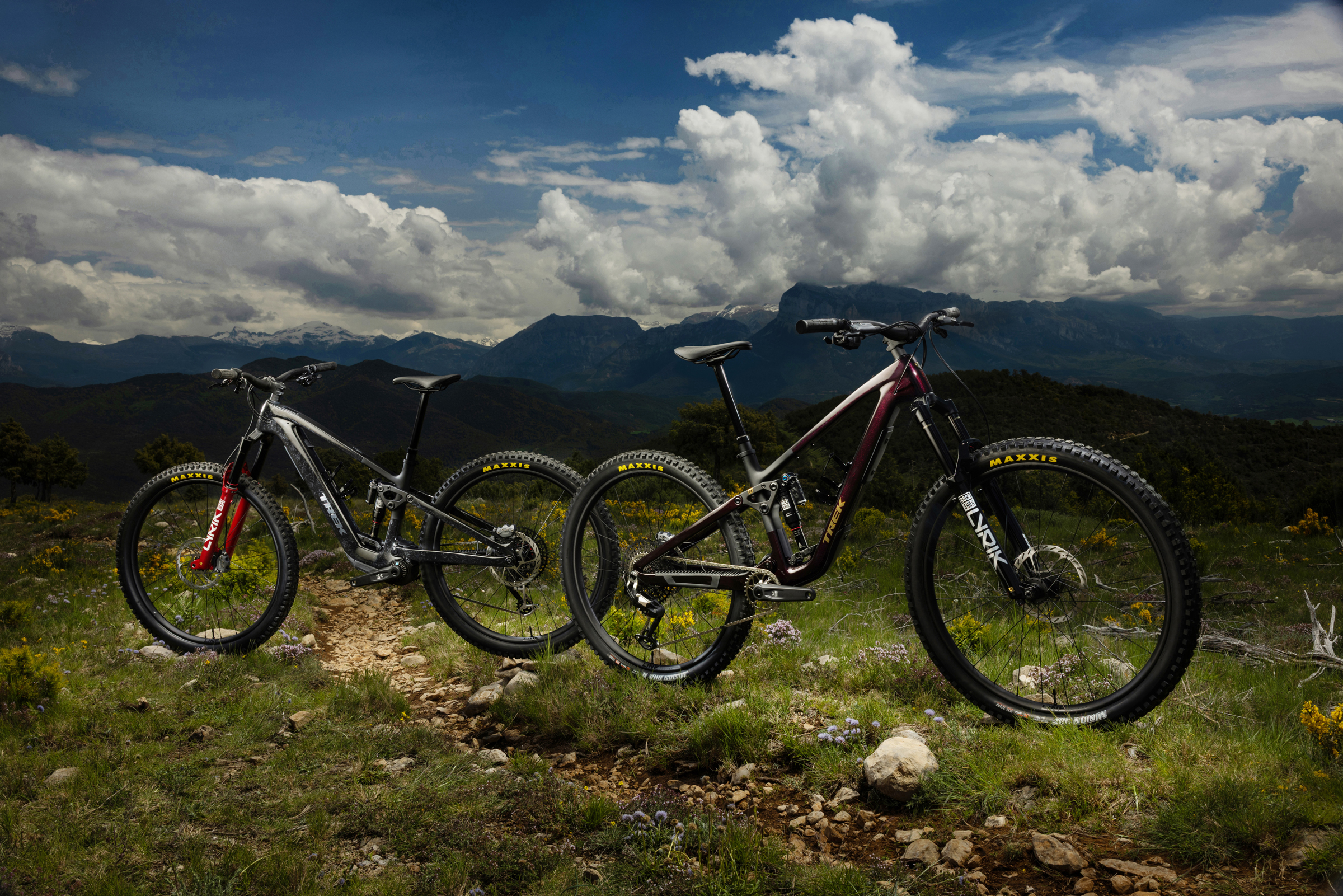
Builds: Fuel MX
- Drivetrain: SRAM Eagle 90 Transmission
- Brakes: SRAM Maven Bronze
- Fork: Fox 36 Factory Grip X2
- Shock: Fox Float X Factory
- Wheels: Bontrager Line Comp
- Dropper Post: Bontrager Line
- Drivetrain: Shimano XT M8100 (mechanical)
- Brakes: Shimano XT M8220
- Fork: Fox 36 Factory Grip X2
- Shock: Fox Float X Factory
- Wheels: Bontrager Line Comp
- Dropper Post: Bontrager Line
- Drivetrain: Shimano XT M8200 (wireless)
- Brakes: Shimano XT M8220
- Fork: Fox 36 Factory Grip X2
- Shock: Fox Float X Factory
- Wheels: Bontrager Line Comp
- Dropper Post: Bontrager Line
- Drivetrain: SRAM Eagle X0 AXS Transmission
- Brakes: SRAM Maven Silver
- Fork: RockShox Lyrik Ultimate
- Shock: RockShox Super Deluxe Ultimate
- Wheels: Bontrager Line Comp
- Dropper Post: Bontrager Line
- Drivetrain: SRAM Eagle 90 Transmission
- Brakes: SRAM Maven Bronze
- Fork: RockShox Lyrik Ultimate
- Shock: RockShox Super Deluxe Ultimate
- Wheels: Bontrager Line Comp
- Dropper Post: Bontrager Line
- Drivetrain: Shimano XT M8100 (mechanical)
- Brakes: Shimano XT M8220
- Fork: Fox 36 Factory Grip X2
- Shock: Fox Float X Factory
- Wheels: Bontrager Line Comp
- Dropper Post: Bontrager Line
- Drivetrain: Shimano XT M8200 (wireless)
- Brakes: Shimano XT M8220
- Fork: Fox 36 Factory Grip X2
- Shock: Fox Float X Factory
- Wheels: Bontrager Line Comp
- Dropper Post: Bontrager Line
- Drivetrain: SRAM Eagle X0 AXS Transmission
- Brakes: SRAM Maven Silver
- Fork: Fox 36 Grip X2
- Shock: Fox Float X Factory
- Wheels: Bontrager Line Pro Carbon
- Dropper Post: Fox Transfer Neo Factory
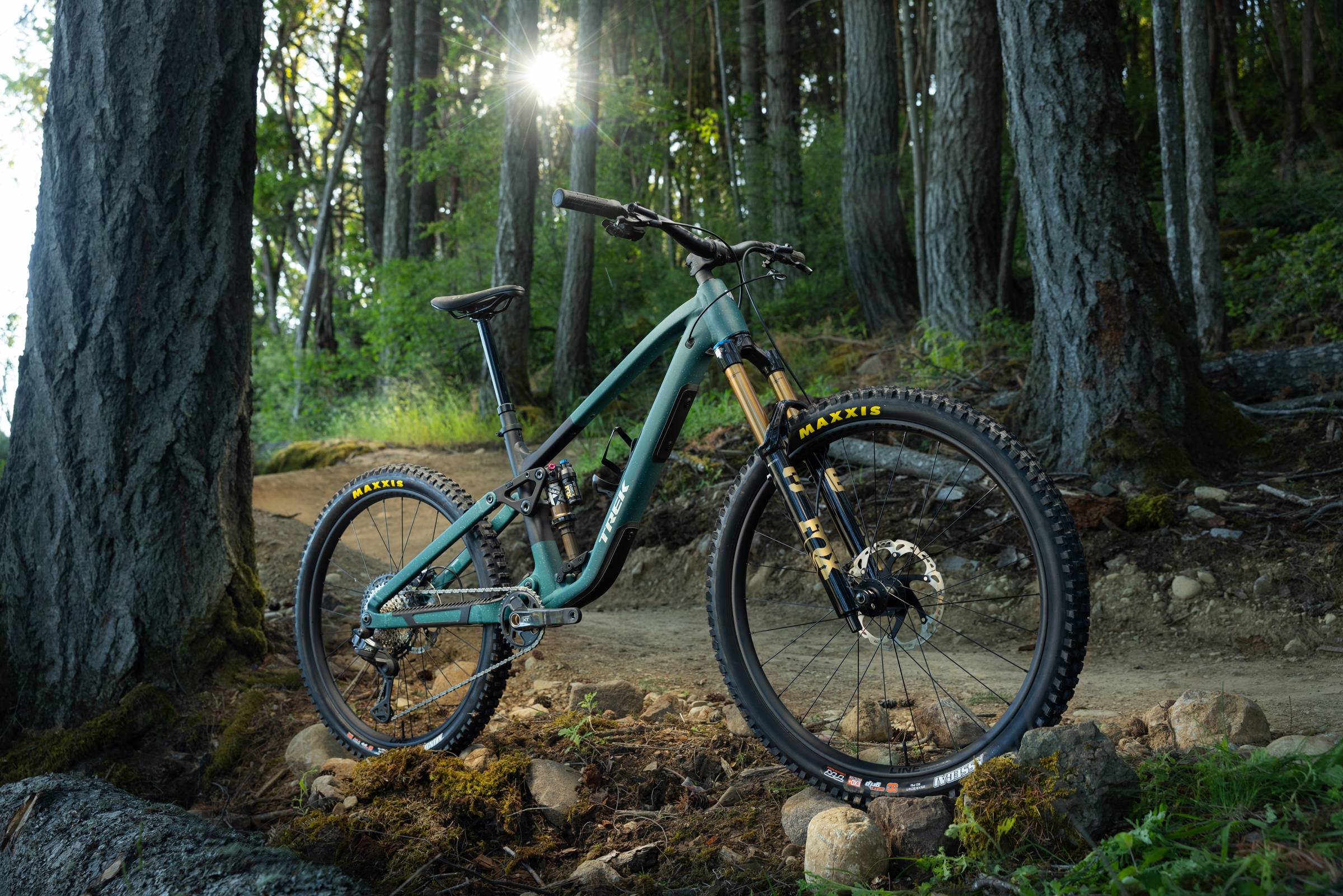
Builds: Fuel LX
- Drivetrain: SRAM Eagle 90 Transmission
- Brakes: SRAM Maven Bronze
- Fork: Fox 38 Factory Grip X2
- Shock: Fox DHX2 Factory
- Wheels: Bontrager Line Comp
- Dropper Post: Bontrager Line
- Drivetrain: Shimano XT M8100 (mechanical)
- Brakes: Shimano XT M8220
- Fork: Fox 38 Factory Grip X2
- Shock: Fox DHX2 Factory
- Wheels: Bontrager Line Comp
- Dropper Post: Bontrager Line
- Drivetrain: Shimano XT M8200 (wireless)
- Brakes: Shimano XT M8220
- Fork: Fox 38 Factory Grip X2
- Shock: Fox DHX2 Factory
- Wheels: Bontrager Line Comp
- Dropper Post: Bontrager Line
- Drivetrain: SRAM Eagle X0 AXS Transmission
- Brakes: SRAM Maven Silver
- Fork: Fox 38 Factory Grip X2
- Shock: Fox DHX2 Factory
- Wheels: Bontrager Line Comp
- Dropper Post: Bontrager Line
- Drivetrain: SRAM Eagle 90 Transmission
- Brakes: SRAM Maven Bronze
- Fork: Fox 38 Factory Grip X2
- Shock: Fox DHX2 Factory
- Wheels: Bontrager Line Comp
- Dropper Post: Bontrager Line
- Drivetrain: Shimano XT M8100 (mechanical)
- Brakes: Shimano XT M8220
- Fork: Fox 38 Factory Grip X2
- Shock: Fox DHX2 Factory
- Wheels: Bontrager Line Comp
- Dropper Post: Bontrager Line
- Drivetrain: Shimano XT M8200 (wireless)
- Brakes: Shimano XT M8220
- Fork: Fox 38 Factory Grip X2
- Shock: Fox DHX2 Factory
- Wheels: Bontrager Line Comp
- Dropper Post: Bontrager Line
- Drivetrain: SRAM Eagle X0 AXS Transmission
- Brakes: SRAM Maven Silver
- Fork: Fox 38 Factory Grip X2
- Shock: Fox DHX2 Factory
- Wheels: Bontrager Line Comp
- Dropper Post: Fox Transfer Neo Factory
Some Questions / Things We’re Curious About
(1) The prior-generation Fuel EX was one of the most well-rounded, versatile do-it-all bikes out there. Trek says that their goal with the new one was to revise and modernize some of the details without messing with what made the last version great to begin with — so how different does it feel, and how has the Fuel EX changed?
(2) What about the Fuel MX and Fuel LX? How different do they feel from the Fuel EX, and how cleanly does the Fuel platform adapt between the three?
Bottom Line (For Now)
The prior-generation Fuel EX is still a great bike, but we figured a new version was likely in the works, given that the Gen 6 version has been on the market for a while now. What we didn’t see coming was its expansion to a modular platform with the new Fuel MX and Fuel LX sitting alongside it.
It’s a compelling idea, though, and we’re very keen to see how it all shakes out on the trail. We’ve started spending time on the Fuel EX already, and will be converting it to MX and LX guise soon, so check out our Flash Review for our early impressions, and stay tuned for a Full Review to come.
Flash Review: Our Initial On-Trail Impressions
BLISTER+ members and those who purchase our Digital Access Pass can check out the Flash Review below to read our initial on-trail impressions. Get our Digital Access Pass to view all our Flash Reviews and Deep Dives, or become a BLISTER+ member today to get access to that and a LOT more, including the best worldwide Outdoor Injury Insurance, exclusive deals and discounts on skis, personalized gear recommendations from us, and much more.
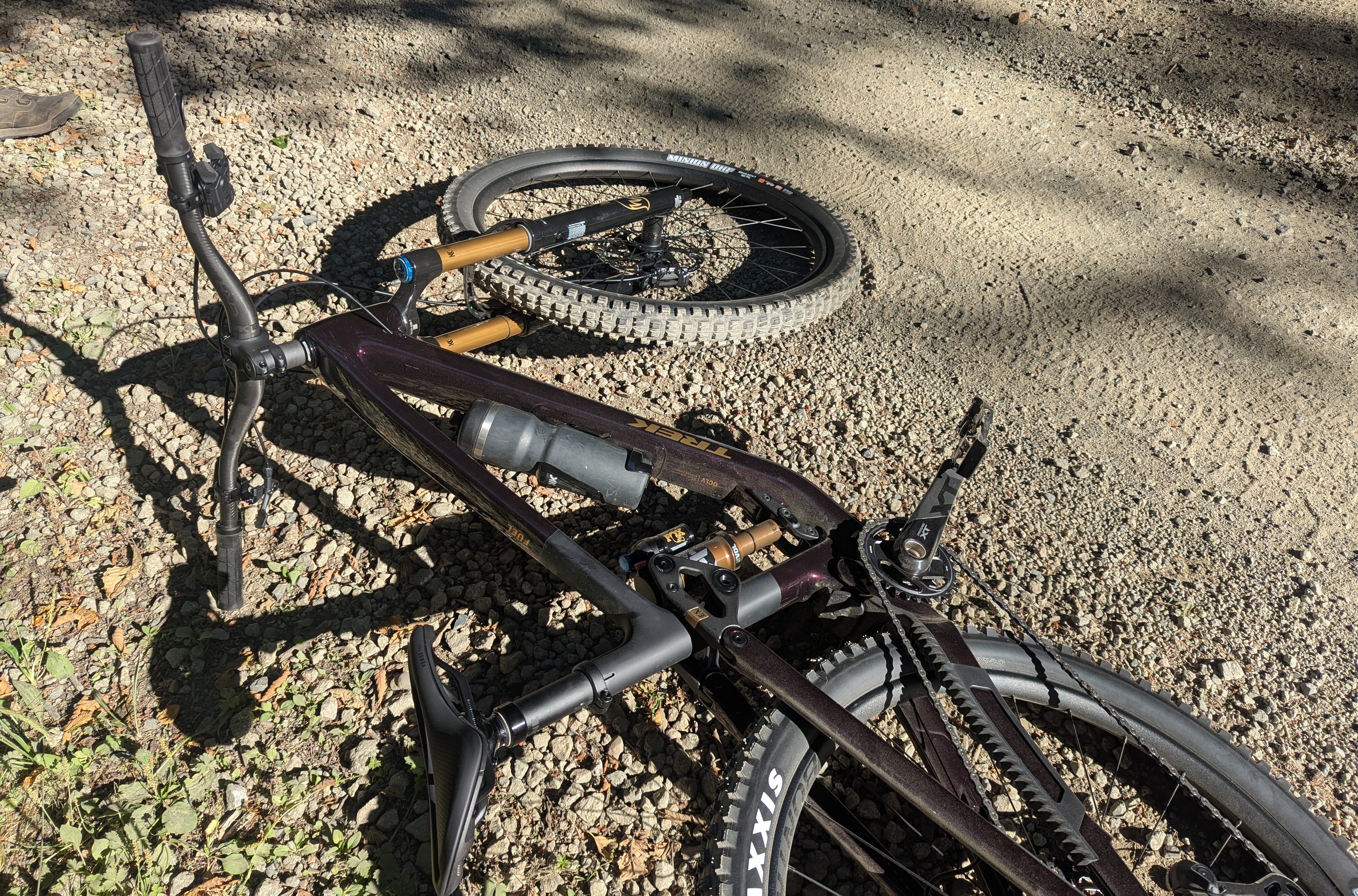
Flash Review: Trek Fuel EX Gen 7
The outgoing Trek Fuel EX Gen 6 was an exceptionally well-rounded, versatile bike that riders of many different stripes could get along with — so is that still true of the new Gen 7 version, or has Trek turned the Fuel EX into something else entirely?
Blister’s Flash Reviews and Deep Dives are accessible to those who purchase one of our paid subscriptions
To get our comprehensive Deep Dives and our initial, unfiltered reports on new gear, become a member and receive many other services, deals, and discounts.
If you’re already an active member, please log in.
(If you’re already logged in and a member in good standing and seeing this message in error, please refresh this page in your browser.)
